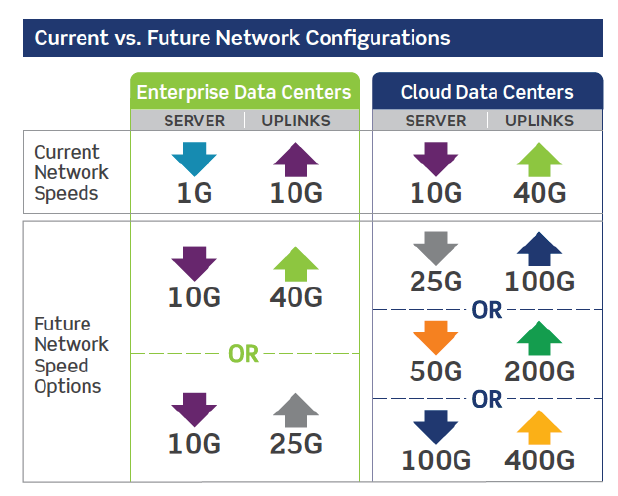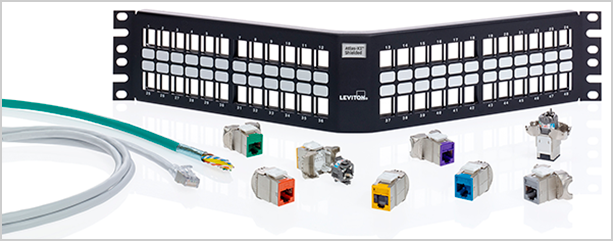Top Network Infrastructure Trends in 2018

We caught up with Brad Leland, Vice President of Sales for Leviton Network Solutions, for his outlook on the state of structured cabling in 2018.
What are the biggest developments in data center networks?
Data centers everywhere are moving quickly to address bandwidth demands. While 10 Gb/s transceiver modules currently make up a large portion of the market, 100 Gb/s is starting to make a big move, driven largely by cloud environments. This year, eight speeds will be available on the market, including 200 and 400 Gb/s, creating an unprecedented number of options for data center managers to evaluate and design their networks to support.
The migration path for enterprise data centers will take advantage of multimode cabling while moving to 10, 40, and 100 Gb/s in the future, while cloud provider networks will move to 100 Gb/s uplinks and 25 Gb/s at the server in the near future. We can also expect future migrations to 200 and 400 Gb/s uplinks and 50 and 100 Gb/s at the server. When comparing optical fiber systems for these higher speeds, cloud service providers are increasingly adopting single-mode over multimode systems.
In addition to fiber, new 25GBASE-T and 40GBASE-T standards give data centers an affordable and flexible option at the access layer, where Category 8 cable and connectivity brings the familiarity of an RJ45-based infrastructure.

We often get asked about wireless networks, and whether they will replace traditional networks in the workplace. How is wireless changing things?
While wireless networks cover more of the workplace, cabling systems aren't going away. For example, 802.11ac enterprise wireless access points (WAPs) have seen significant adoption in recent years, with the capability to deliver 1.3 Gb/s today and up to 6.7 Gb/s in the future. However, businesses won't see the true benefits of these higher speeds without the right cabling infrastructure out to the WAP.
To get the most out of 802.11ac, the Telecom Industry Association (TIA) recommends using Cat 6A cables in new installations, which will give you higher data rates and increased power. The organization also suggests a minimum of two drops for every WAP, so future upgrades take less time. Also, Cat 6A is the cable you'll need to prepare for the next generation wireless network, 802.11ax which will allow for wireless data rates up to 10 Gb/s, and is due for release in 2019.
Power over Ethernet continues to gain traction. What is leading to its adoption?
PoE is expected to continue its upward growth trajectory in the coming decade. PoE-enabled port and device sales are projected to grow from $45 million in 2015 to $1 billion by 2021, according to a global forecast by MarketsandMarkets Research. Much of this growth comes from the benefits of long term cost savings, more centralized network control, greater operational efficiencies, and the ability to integrate newer technology into the network.

PoE encompasses a tremendous range of devices and applications, including lighting, WAPs, IP cameras, and industrial devices. However, these systems need the right cabling and network design in place, especially when supporting devices that require faster network speeds or more power. Twisted-pair cabling transmitting upwards of 100 watts can encounter potential overheating issues that may affect transmission performance. Similar to wireless cabling recommendations, industry standards groups like TIA recommend Category 6A cable in order to meet high-wattage PoE requirements and support future network upgrades.
Learn more about the latest network trends and technologies at Leviton.com/ns/whitepapers.


